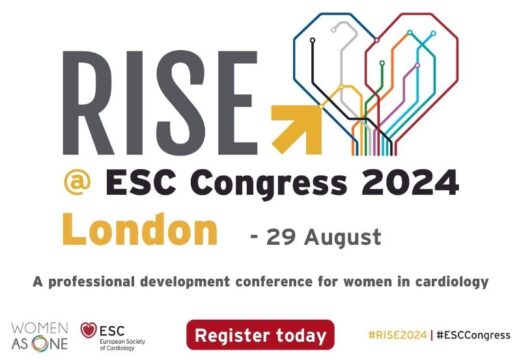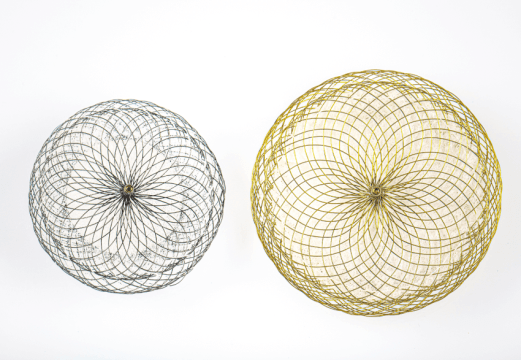Due to the proven long-term results and substantial increase in the number of transcatheter aortic valve implantation (TAVI) procedures conducted, the application of TAVI has been extended to clinical situations outside the original scope, such as non-calcified aortic regurgitation (NCAR). Device placement in these new scenarios entails a technical challenge due to the absence of calcium for anchoring or the presence of wider annulus diameter.

Currently, this issue is addressed by means of specialized devices, such as the JenaValve Technology Trilogy TAVR system. However, the current version of this system only covers annulus sizes up to 27 mm. On the other hand, balloon-expandable device MyVal, by Meril Life Sciences, offers the potential advantage of covering a broader range of annular areas, reaching up to 840 mm2. Nevertheless, its use has been documented only in isolated case reports.
The purpose of this study was to investigate the experience with the MyVal device and present short- and medium-term results. To that end, researchers conducted an international multicenter observational study that included patients with severe symptomatic NCAR who were not candidates for surgery according to medical assessment. Seventeen medical centers across Europe, the United States, and the Asia-Pacific region took part in it. Patients with concomitant aortic stenosis (peak velocity >2.5 m/s) were excluded.
The primary endpoints of this study focused on one-year all-cause mortality rates and cardiovascular mortality. Secondary endpoints addressed rehospitalization, device success, and other relevant clinical events from day 30 onwards.
Read also: Predictors and Evolution of Permanent Pacemaker After TAVR with Self-Expanding Valves.
The analysis was based on a sample of 113 patients, 64.6% of whom were male. The average age was 78.4±7.5 years, and the STS and EuroSCORE II scores averaged 2.7±1.7% and 3.5±2.7%, respectively. Most patients (96.5%) had severe aortic regurgitation, with 59.3% exhibiting aortic root dilation (≥40 mm) and 7.1% having a bicuspid aortic valve. Average annular area was 638.6±106.0 mm2; in 85% of cases it was predominantly non-calcified and the remaining showed mild calcification. Subannular left ventricular outflow tract (LVOT) morphology was categorized as tubular in 12.4% of cases, conical in 58.4%, and narrow in 28.6%.
All procedures were performed using a transfemoral approach, with general anesthesia in 39.8% of cases and transesophageal guidance in 19.5%. Predilation was not necessary, although 4.4% of patients required postdilation. Valve annular size was within the recommended range for extra-large sizes in 81.4% of cases, with additional balloon volume expansion to achieve overexpansion in 92% of cases. The average degree of oversizing was 17.9±11.0%, with variability ranging from -9.5% to 38.1%.
Technical success and procedural success rates were 94.7% and 92.0%, respectively. There were no cases of annular rupture, cardiac tamponade, coronary obstruction, or stroke. However, there were valve embolization events in 3.5% of cases (1 antegrade and 3 ventricular), with narrow LVOT morphology being a significant predictor of ventricular embolization (12.5% vs. 0%; p = 0.007).
Post-procedure echocardiography revealed no residual aortic regurgitation in 68.1% of cases, trivial regurgitation in 23%, mild regurgitation in 7.1%, and moderate regurgitation in 1.8% of cases. Permanent pacemaker implantation was required in 13.3% of cases. In-hospital mortality was 3.5%, and cardiovascular mortality reached 1.8%, with no cerebrovascular events during the hospitalization period.
Read also: Long Term Outcomes after Complex PCI According to Operator Experience and Use of IVUS.
At 30 days, 2 additional deaths were recorded, raising the overall mortality rate to 5.3%, in addition to 2 cerebrovascular events (1.8%). The need for permanent pacemaker implantation was 15.1%, with a rehospitalization rate of 3.5%. One-year mortality was 9.7%, with cerebrovascular events in 5.3% of cases and an increase in the overall permanent pacemaker implantation rate (22.2%).
Technical success was found to be associated with improved survival (97.1% vs. 72.7%; p=0.012), while valve embolization emerged as the main determinant for mortality (p=0.047). Predictors of one-year mortality and rehospitalization risk included technical failure, left ventricular ejection fraction at follow-up (31.0±16.9% vs. 43.2±13.0%; p=0.007), and gender (male 20.5% vs. female 5.0%; p = 0.027).
Conclusions
This is the first registry of MyVal device use for the treatment of NCAR. Outcomes included a high procedural success rate with minimal residual regurgitation and an adequate safety profile. Additionally, it was noted that device embolization occurred in cases with narrow LVOT (associated with increased mortality).

Dr. Omar Tupayachi.
Member of the Editorial Board of SOLACI.org.
Original Title: Clinical outcomes of TAVI with the Myval balloon-expandable valve for non-calcified aortic regurgitation.
Reference: Sanchez-Luna, Juan Pablo et al. “Clinical outcomes of TAVI with the Myval balloon-expandable valve for non-calcified aortic regurgitation.” EuroIntervention : journal of EuroPCR in collaboration with the Working Group on Interventional Cardiology of the European Society of Cardiology, EIJ-D-23-00344. 11 Aug. 2023, doi:10.4244/EIJ-D-23-00344.
Subscribe to our weekly newsletter
Get the latest scientific articles on interventional cardiology




